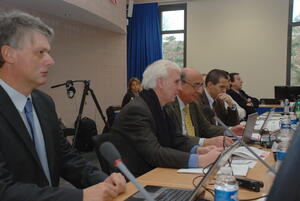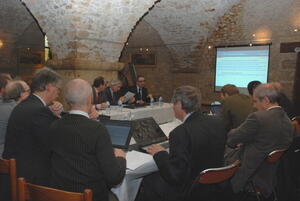ITER fuses with industry
The vacuum vessel is no doubt one of the components that drive the ITER schedule. How much time will be needed for the manufacturing of the biggest fusion furnace ever built? What is the correct welding technique for the achievement of the millimetre tolerances in the plasma chamber? Is a full-size prototype necessary or will partial mockups do?
The ITER Technical Advisory Group (TAG) devoted a full day of its four-day meeting marathon this week to these questions, involving twenty-two industry representatives from Europe, Japan and Korea to provide recommendations based on their expertise.
During the forum, a presentation was given by Hirohisa Takano from Toshiba reviewing the past experience producing a full-size mockup.
The European Domestic Agency "Fusion for Energy" (F4E), which will manufacture seven out of the nine vessel sectors, sent its new ad-interim Director Frank Briscoe and senior technical advisors to address their opinion on issues like available infrastructure, necessity of prototypes and manufacturing processes. Hyundai Heavy Industry—which won the contract to build two of the sectors on behalf of Korea last week—gave a presentation on their manufacturing approach via remote video connection.
In the afternoon, after a series of presentations on manufacturing feasibility and alternative approaches, the meeting broke up into one-on-one discussions in which representatives of the four large consortia that are bidding for the contract with F4E, together with TAG and ITER management, discussed the various approaches in more detail.
The meeting was "very beneficial," according to Gary Johnson, the ITER Deputy Director-General responsible for the tokamak. "The main objective of this meeting was to assess industrial capability to deliver the vessel sectors at minimum time and cost. In that sense the meeting was very constructive and the results will be used to help finalize our assessments of technical feasibility of the schedule."
The recommendations stemming from this meeting, together with outputs from other schedule-related meetings, will be presented to the Heads of Delegations in February this year.




